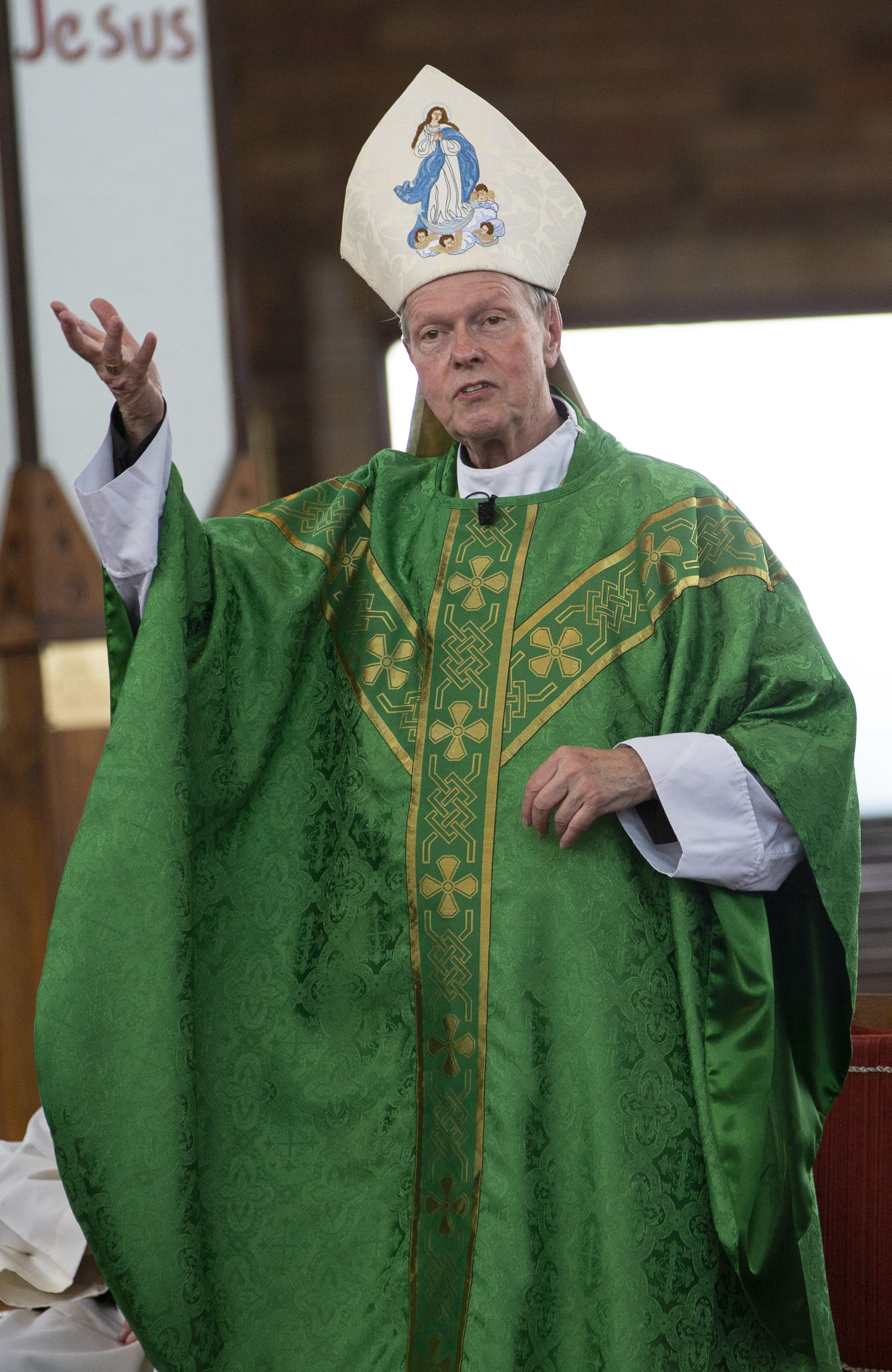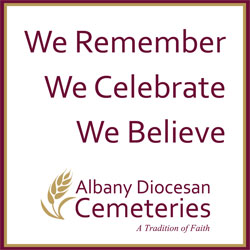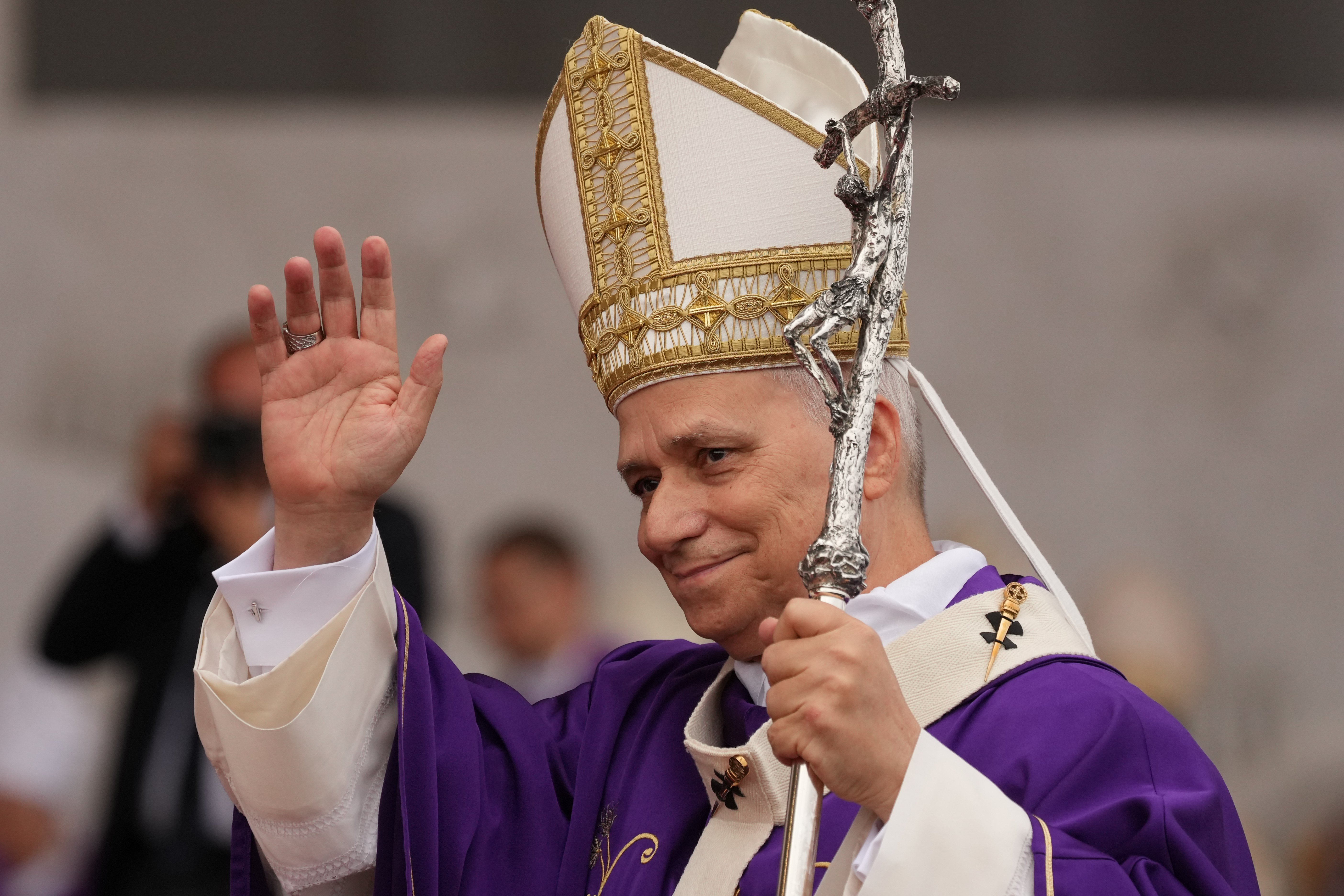October 8, 2025 at 10:27 a.m.
LIFE IS A GIFT
Editor’s note: Father Anthony Barratt offered this reflection on Respect Life Sunday.
With this new month, we have begun our annual “Respect Life Month,” when we focus on promoting a culture of life, from conception to natural death and everything in between. Perhaps we can revisit what we might call “end of life issues.” An added urgency is given to this, as a piece of legislation has been passed by the New York State Assembly regarding legalizing so called “assisted suicide,” or its official and chilling title, the “Medical Aid in Dying Act” (NYS Bill A136). It is now awaiting delivery to the governor’s in-tray, with a possible approval and signing into law in our state.
At the outset, let us be clear and define what exactly we are facing here. Assisted suicide, or its bizarrely named cousin, “assisted dying,” is the deliberate and intentional intervention to cause the death of a patient; that is to give a person drugs to end their life, if they so request. Doctors will therefore be asked, in effect, to break their Hippocratic Oath of “doing no harm.” As the American Medical association puts it: “Physician-assisted suicide is fundamentally incompatible with the physician’s role as healer, would be difficult or impossible to control, and would pose serious societal risks.”
We also need to be clear that this is not the same as ending medical treatment. Church teaching is very definite about this, although we enter the complex area of medical practices and ethics. First of all, we can distinguish ordinary and extraordinary medical intervention. Ordinary medical treatment could include actions such as the hydration or feeding of a seriously ill person, or the giving of drugs to help a patient live a relatively normal life. An extraordinary intervention could be a major medical intervention, such as the use of a life-support machine in certain circumstances. Ordinary medical treatments should never be withdrawn. The difference between withdrawing extraordinary medical assistance and assisted suicide is that the former removes a burdensome or useless treatment, allowing nature to take its course. The latter is a deliberate, intentional and direct act of ending a patient’s life.
Why am I speaking of this? What are my credentials? Of course, I am speaking as a priest. It is my calling and duty to make sure that people are aware and understand how we view the sanctity of human life. As a priest, I have encountered many who have contemplated ending their life because of illness, old age or depression. But, I am also speaking as a person: that is as a member of a family and as someone who has been blessed with good friends. There too, I have spent time with those close to me who might have been contemplating ending their life, or who have had debilitating terminal illnesses, for example, my own recent experience with my dear parents (one battling dementia and the other terminal cancer).
Let us look at the landscape of states where assisted suicide is already lawful and the picture of how things might be in New York State, if legislation is signed by the governor. In Oregon (often held up as a model for the New York legislation), there are reports that health insurance companies will now pay for assisted suicides, but not for certain treatments that may sustain life. Furthermore, once drugs to end life have been prescribed, there are often no requirements to assess a patient’s competency to make such a huge decision. There is no supervision or tracking of the lethal dose of drugs, no witness needed at the time of death, and no requirement to consult a psychiatrist or psychologist, or family, or friends, or for any counselling. There is also no requirement to offer any sort of alternative help, or other routes or actions.
It is a fact, incidentally, that 95 percent of suicides involved people with diagnosable psychiatric conditions. Furthermore, surveys regarding requests for assisted suicide in states where this is legal reveal that pain is NOT given as the main reason for the request. For example, in Oregon, 90 percent of people stated that it was because they were less able to engage in activities making life enjoyable. Ninety percent also listed a loss of autonomy and 49 percent also listed the sense of being a burden to others. One has to look a long way down the list of reasons to find pain being mentioned.
If that is not enough, the proposed NYS law is riddled with serious deficiencies. These are outlined, in detail, on the NYS Catholic Conference’s website. For example, the proposed NYS law is dangerously vague and broad as to who would be eligible. This would obviously open the door for vulnerable groups to be in danger, such as the elderly, disabled, those who feel isolated or lonely, or those with mental health issues. This vagueness extends further. For example, there is the so-called “six-month rule” (those with a terminal diagnosis of six months or less). The actual wording of this rule is so vague that it could be extended to cover pretty much any treatable medical condition such as diabetes, or chronic respiratory, or cardiac diseases.
What is more, doctors would, in effect, be asked to falsify the cause of death on a death certificate. They could simply list the underlying illness, rather than the lethal dose of drugs given to the patient that actually and intentionally caused the patient’s death. In other words, a doctor would be asked at best to mislead or, at worst, to be mendacious.
There is no requirement for a proper psychological examination, nor consultation. Doctors prescribing the lethal drugs do not need to be the person’s normal physician and this life or death consultation might conceivably be done simply via a Zoom meeting.
We must also take account of many other factors. Most obviously, there have been enormous and impressive strides made in palliative care. This is true in terms of any drugs or medical interventions employed, as well as crucial matters such as the importance of family and others. The beauty here is that palliative care actually sees a person, rather than perhaps just a problem or an illness. Furthermore, research shows that patients are best served when medical professionals, families and loved ones provide support and care, with dignity and respect.
These then are facts: medical, scientific and social. For us, as Christians, we take on board all these factors. However, as Christians, the most compelling reason for opposing the law is our belief in life and, in God, the author and source of life. We believe that life is a gift. Our readings at Mass over the last few weeks have stressed this crucial truth, that we are stewards of all we have and are — including life itself. We are not possessors, nor owners. Just as it is absurd to speak of having a choice or right to end life at its beginning, so too for life as it draws to its natural end, or even when life seems a very heavy burden or a cross, rather than a gift.
So, what can we do? How can we be defenders and promoters of a culture of life? Well, we can write to our elected state representatives, including the governor. As mentioned, helpful information and suggestions for action can be found on the Catholic Bishops of New York State website (www.nyscatholic.org). We can inform ourselves further about our Catholic understanding and beliefs, for example by reading the short but very helpful leaflet called “Now and at the Hour of Death: A Catholic Guide to End-of-Life Decision-Making” by the Catholic Bishops of New York State.
We can also prepare ourselves by making our end of life wishes clear through having a health care proxy. There are plenty of resources to help us with this. We should avoid signing general or “cookie cutter” documents if they are presented to us, such as standardized MOLSTs and POLSTs, that often do not reflect Catholic beliefs or faith. Similarly, we should avoid signing unqualified or vague DNR forms, especially when we are lying on a bed awaiting a significant medical intervention (as happened to me six months ago). We can volunteer to help with so many wonderful people and groups who work with the elderly, the dying, or those who find life hard and burdensome. And, of course, we must pray! In fact, let us end our reflection with a prayer for life …
God our Creator, we give thanks to you,
who alone have the power to impart the breath of life
as you form each of us in our mother’s womb;
grant we pray, that we, whom you have made stewards of creation
may remain faithful to this sacred trust
and constant in safeguarding the dignity of every human life.
We pray for a spirit of conversion
in those who allow or promote a culture of death,
most especially those charged with public office;
that they may once more see and understand the truth
and recognize their responsibility to guard and defend
every human life from conception to natural death. Amen.
— Very Rev. Msgr. Anthony M. Barratt, STL, PhD, EV
- Curia must reflect ‘new humanity,’ founded on love, solidarity, pope says
- OSV Editors: Pope Leo XIV is our Catholic of the Year
- All children kidnapped from Nigeria Catholic school will be home for Christmas
- Pray for peace in front of the Nativity scene, pope asks children
- Pope names vicar general Diocese of Austin, Texas, as bishop of Tucson, Arizona
- Full text: Pope Leo XIV Angelus address Dec. 21
- ‘Joy Within His House’: An inside look into the life of cloistered nuns
- Avatar: Fire and Ash
- Washington Roundup: Trump suspends green card lottery; health care subsidies set to expire
- Catholic actor finds Christmas joy in helping US charity








Comments:
You must login to comment.